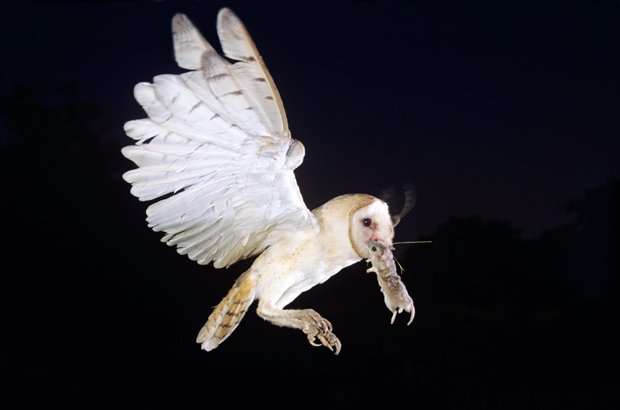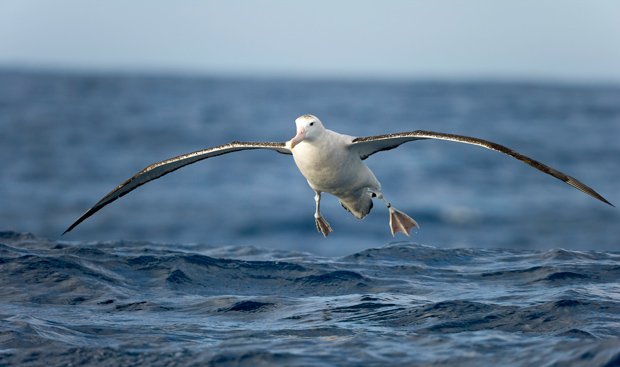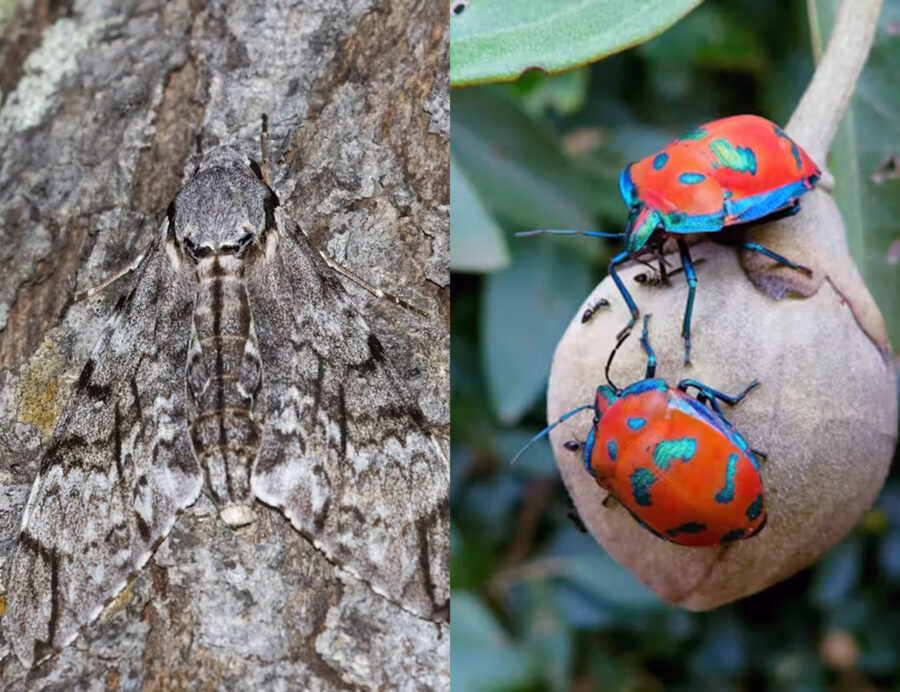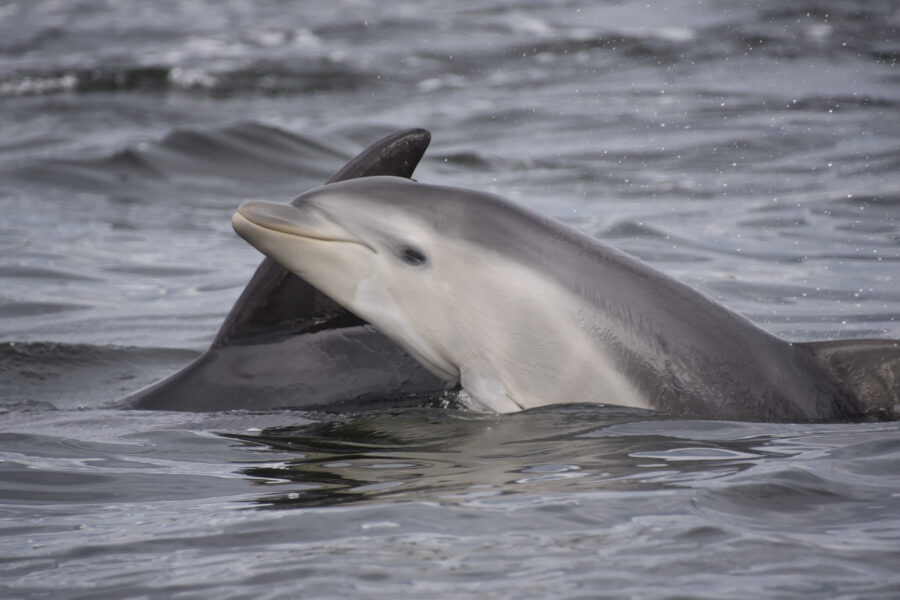The miracle of flight

HERE’S THE THING: the humble locust can fly hundreds of kilometres without refuelling – 500km is not an unusual jaunt. Locusts have even been known to cross the Atlantic, admittedly with the help of a storm or two.
Aeronautical engineer Dr John Young tosses me these tidbits as we chat in his office at the Australian Defence Force Academy in Canberra. John, who, aside from researching insect flight, has worked on flight-test programs for F/A-18 fighters, can’t suppress his admiration: “I’m in awe of these animals, being able to do the things they do. It’s fiendishly clever!”
“Clever” is one word for it. I prefer “miraculous”. To me, flapping flight in animals – birds, bats and insects – is nothing less than pure magic, one of nature’s most amazing tricks. Yet it happens every day and we don’t give it a second thought. Maybe this is because the animals make it look so easy. They just flap their wings and off they go. Nothing to it.
Don’t be fooled. When you start trying to unpick this exquisitely graceful and superficially simple act of locomotion, it turns out to be ingenious beyond imagining. Scientists have been probing flapping flight (as opposed to gliding) for years, but still haven’t entirely worked it out.
How flight works

A Major Mitchell’s cockatoo (Cacatua leadbeateri) in flight.
So how does it work? Let’s look first at the wings. As we do with aircraft, flying creatures use wings to get them into the air and keep them there. Most wings, but not all, have a slightly curved upper surface and a less curved or flat lower surface. They are mostly rounded at the front (the leading edge) and taper to a sharp rear (the trailing edge). The study of how air moves around a solid object like a wing is termed aerodynamics. Wings have an amazing aerodynamic property. If you propel a wing horizontally through the air, it generates an upward force called lift. For flight to be possible, lift on the wings must overcome the gravitational force pulling the aircraft or animal down.
Nearly all aircraft other than helicopters have fixed wings. Unless they’re attached to an unpowered aircraft like a glider, fixed wings are pushed through the air by engines that provide forward thrust. A flying animal lacks this separate source of thrust: its wings must support the animal’s weight and provide thrust simultaneously.
Although a flapping animal wing may appear to move up and down vertically, it doesn’t. On the downstroke, the wing actually sweeps forward as well as downward. This forward movement is one of the keys to animal flight. The other is the wing’s remarkable ability to twist along its length during the stroke and, in this way, to angle the leading edge slightly downward, especially nearer the wingtip. This causes the lift to be directed forward rather than upward. In other words, towards the outer end of the wing, some lift becomes thrust and drives the animal forward.
The downstroke provides most of a bird or bat wing’s lift and thrust. For the upstroke, the animal may partly flex, or fold, its wings. Even so, all insects and most birds and bats can generate useful aerodynamic forces on the upstroke too. A flying animal generates lift even when it’s flying without flapping, an activity we call gliding. In the case of both an animal and a gliding aircraft, the thrust that drives the wings forward is provided by loss of altitude, since the animal or aircraft must glide downward at a slight inclination in order to achieve enough forward motion to create lift.
Evolution of flight

The wandering albatross has the biggest wingspan of all birds, measuring up to 3.6m. Albatross wings are long and narrow for gliding and soaring in strong winds.
During our planet’s history, powered animal flight has emerged in four animal groups – birds, bats, insects and extinct flying reptiles called pterosaurs. How and why these four developed wings and took to the air are matters of heated debate among scientists. There is general agreement, though, that wings did not develop specifically as flying devices but originally were appendages with other functions. In the case of the dinosaur ancestors of birds, feathered forelimbs may have been used for display or to help with running and leaping.
“At some point, by coincidence or random chance, the form of a given structure allows the animal to do something new with it,” says David E. Alexander, assistant professor of entomology at the University of Kansas, in his book Nature’s Flyers. “If the new function is advantageous, natural selection will act to refine and improve it.”
But why fly? Biologist Dr Bret Tobalske, director of the Flight Laboratory at the University of Montana, says, “The diversity of creatures that fly…indicates that being able to move quickly at a low cost of transport is a terrific strategy for exploiting untapped niches through migration and otherwise making a living.”
Powered flight can be up to 10 times more fuel-efficient than walking or running. As for speed, flying animals can move through the air 10-20 times faster than an animal of similar size moves on the ground. Flight’s survival benefits are reflected in the fact that three-quarters of warm-blooded vertebrate species fly, an astounding figure. Of 13,000 species, about 10,000 (comprising some 9000 birds and 1000 bats) are flyers. But insects outclass them all, being the most diverse animals on earth and having colonised nearly all environments.
“Most insects fly at some stage in their development,” says Professor Geoff Spedding, chairman of aerospace and mechanical engineering at the University of Southern California. “Since insects comprise the vast majority of species on Earth, flight is actually the most common form of locomotion, and we humans are in a small minority in being unable to do it without the assistance of elaborate or powerful mechanical devices.”
Of all flying creatures, insects possess the most distinctive body structures for flight, from unique muscle systems to ridged or corrugated wings that are as far from sleek aircraft wings as you can get. In insects, aerodynamics moves into a whole new dimension. This is largely because, to small flying creatures, the air feels thick, and flying is more like treading water.
Explaining aerodynamics

Hummingbirds are among the smallest of flapping birds. And they’re the fastest flappers, beating their wings up to 80 times a second. They are the only birds that can fly backwards.
After humans became airborne in powered, fixed-wing aircraft during the 20th century, scientists proposed that powered animal flight might be explained by conventional fixed-wing aerodynamic theory, though they were aware the theory had its limitations. It was technically known as ‘steady-state’ (or ‘quasi-steady-state’) aerodynamics because air was thought to flow steadily in a straight line from the front to the back of any wing, fixed or flapping.
In 1984 Professor Charlie Ellington, latterly director of the Animal Flight Group at the University of Cambridge, published a four-volume study confirming things weren’t quite so straightforward, that other aerodynamic phenomena were at work during flapping. In a 1996 paper he went on to offer a solution to the ‘bumblebee paradox’, a tongue-in-cheek conundrum in which the bumblebee appears to break every rule in the flying handbook but still manages to fly with ease.
Dr Jim Usherwood, who studies animal locomotion at the Royal Veterinary College, in London, explains. “For most wings and propellers working efficiently, the air can be treated as passing steadily, directly across the wing, keeping close to the wing surface,” he says. “In slow, vigorously flapping animal flight, however, each of these assumptions turns out to be invalid: airflow is highly unsteady; it often shoots along the wing towards the tip and can separate from the wing surface to produce a ‘leading-edge vortex’.”
Welcome to the world of ‘unsteady’ aerodynamics. It turns out that spiral leading-edge vortices (LEVs) and other associated vortex-like mechanisms are fundamental to insect flight, dramatically boosting lift by generating extra low pressure on the upper wing surface.
“My hunch is that there’s a blending of steady and unsteady aerodynamics for almost every flying creature,” says Bret Tobalske. Pointing to the albatross as an example, he adds: “Even if it’s not flapping it may be encountering what we typically think of as an LEV periodically that gives it a temporary, instantaneous surge of lift.”
LEVs aren’t the only unsteady phenomena that natural flyers use. Others include ‘wake capture’, which involves an insect wing gaining lift from vortices shed in the previous stroke, and ‘clap-and-fling’, in which the wings of insects, and some birds, meet (‘clap’) at the limit of their strokes and then generate vortices on separating. They add up to a formidable box of aerodynamic tricks that help to boost lift enormously.
“All these mechanisms are the resolution of the bumblebee paradox,” says the Australian Defence Force’s John Young, who researched flapping wings for his PhD and has collaborated to study locust flight with the Animal Flight Group at the University of Oxford. “People were using quasi-steady aerodynamic principles in their studies of natural wings, but it just doesn’t work. With these dynamic [unsteady] methods a bee uses, it can generate something like four times the lift that it would be able to with conventional aerodynamics.”
As he says, fiendishly clever.
RELATED STORIES




